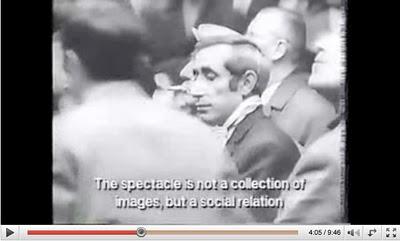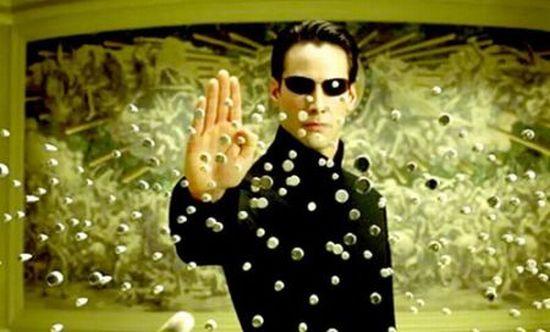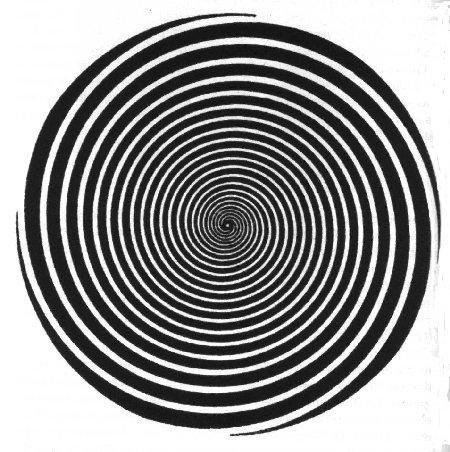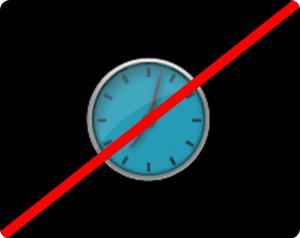
Everything has become, according to the authors mentioned above, representation. For Baudrillard just as for Debord, it is an empty representation. Simulation doesn’t have a presence under it! It’s not that our society has become an image but rather that, to talk like Debord, society is a set of relations concretized in images. That is why détournement and appropriation took a new turn along with these theories. Yes, in this whole « lie » with no presence under it : « choosing means fabricating ».

For Debord, as for Bourriaud who is probably inspired by both Brecht and Lyotard, art gives us a different experience of the « real ». Just like Neo, who realizes deep down inside that the Matrix is a big illusion and that everything in it is malleable, he starts to make this “new” reality visible for the others. As Bourriaud mentioned it :” the museum, like the city itself constitute a catalog of forms, postures and images for artists ». The artists of today are semionauts : they « produce original pathway through signs ».

Bourriaud says that the art of twentieth century is an art of “montage (succession of images) and detourage (superimposition of images)”. That is probably why I feel so attracted by « making » history of art with images, just as Warburg did a hundred years ago (Mnemosyn Atlas). It is linked with this idea from Nietzsche that one must not be subjected to history, but that history should serve us for our actions, just as we must not be subjected to the ancient artworks but use them to go beyond. It is no more a matter of representing, but creating the present itself. Artists become actors of the spectacle who play with the scripts to show that there are actually scripts.

The idea of montage is still too linear for me and I believe Didi-Huberman has created a confusion by using it to define the Memnosyn Atlas. Montage refers too much to cinema. There isn't, in Warburg’s work, a montage in cinematographic sense of the term: it’s totally the opposite! There is no timeline. Warburg’ Atlas breaks the timeline. He doesn’t believe in any kind of linearity : that’s why he uses images! There is no narrative in there, it’s the absence of it that creates a new historical perspective. I think that the breaking of the illusion timeline is more striking then making new narratives out of the elements of the culture. We all participate in making narratives in our lives. Traditional history of art is a montage. What about breaking this illusion of linearity by something else then linearity (and multilinearity)? Something that doesn't even suggest it? Is it possible?

Personally, I like artworks that captivate something else than my thoughts and suggest something else than a narrative, even if it’s a “new” narrative. Superimposition is probably what interests me more. I think of an image as not only something visible, but audible, something I can smell, maybe even touch and taste. The specificity of the image is simultaneity. It's through the experience of simultaneity that we "understand" Warburg's Atlas and his notion of Pathosformel. Images are sensuous and they contain a specific knowledge. Putting together a montage (linear) breaks the specificity of this simultaneous knowledge by creating a narrative. Can we make "gaps of consciousness" into our world of images and illusions without using narrative and timelines? Can we make art history without using narrative to respond to those image experiences? Does the experience need to be translated in words in order to be fully experienced?

Why make more images in a society submerged by images ? I will quote a very intelligent thought of Bourriaud here : « Contrary to the receive idea, we are not saturated with images, but subjected to the lack of certain images, Which must be produced to fill in the blanks of the official image of the community ». It’s both unfortunate and paradoxical though, that this production of non official images is seen, for a good part of it, as a creation of (or insertion of images in) new narratives...


